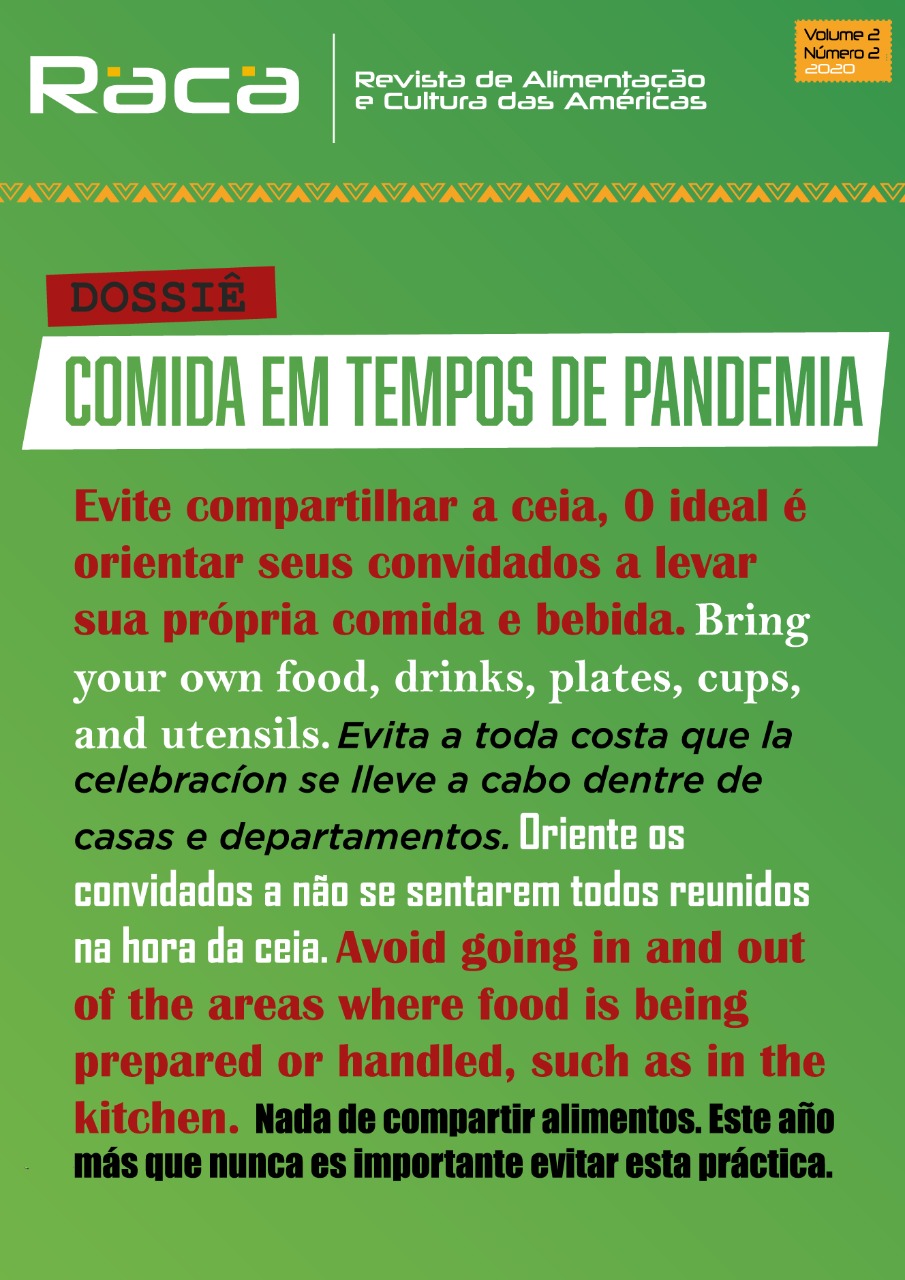“Hot food” as a strengthener of the immunological system during the pandemic Covid-19: food consumption in the urban environment
DOI:
https://doi.org/10.35953/raca.v2i2.64Keywords:
Covid-19; alimentación; caldosAbstract
The objective of this article is to analyze food practices during the COVID-19 pandemic in a province of central-western Mexico. In this context, food consumption has been distinguished by the predilection for broths and stews that are considered by the population as strengthening the immune system. A relationship is established between the hot and the highest performance of the "defenses" in the body, so that during the pandemic "thick" or high lipid consistencies are preferred, accompanied by legumes, instead of saturated lipids such as Chicharrón pork, the birrias [A dish prepared in various regions of Mexico based on lamb, mutton, goat or marinated beef. It is prepared based on some types of chili peppers and traditionally it is cooked in a hole underground with firewood coals and maguey stalks, or in a metal container.
], etc.
Although the consumption of hot food is part of the values and symbols about the body and food in Mexico, in this document we also propose it as part of the social action that is part of daily acts, which reappear in a context of crisis and health and economic uncertainty. This examination is done through interdisciplinary collaboration from the perspective of nutrition and anthropology, which allow us to present a broader scenario in relation to people's eating practices. To do this, we went to the case study of a patient recovered from COVID-19, as well as the ethnography of food consumption in a market in a popular urban area
Downloads
Published
How to Cite
Issue
Section
License
Copyright (c) 2020 The Journal of the Food and Culture of the Americas

This work is licensed under a Creative Commons Attribution 4.0 International License.






